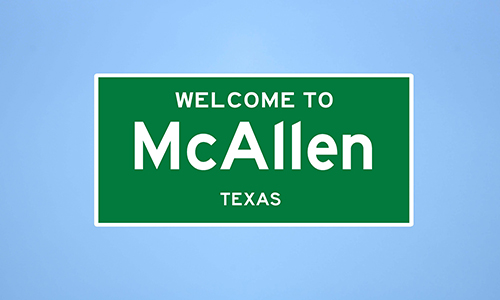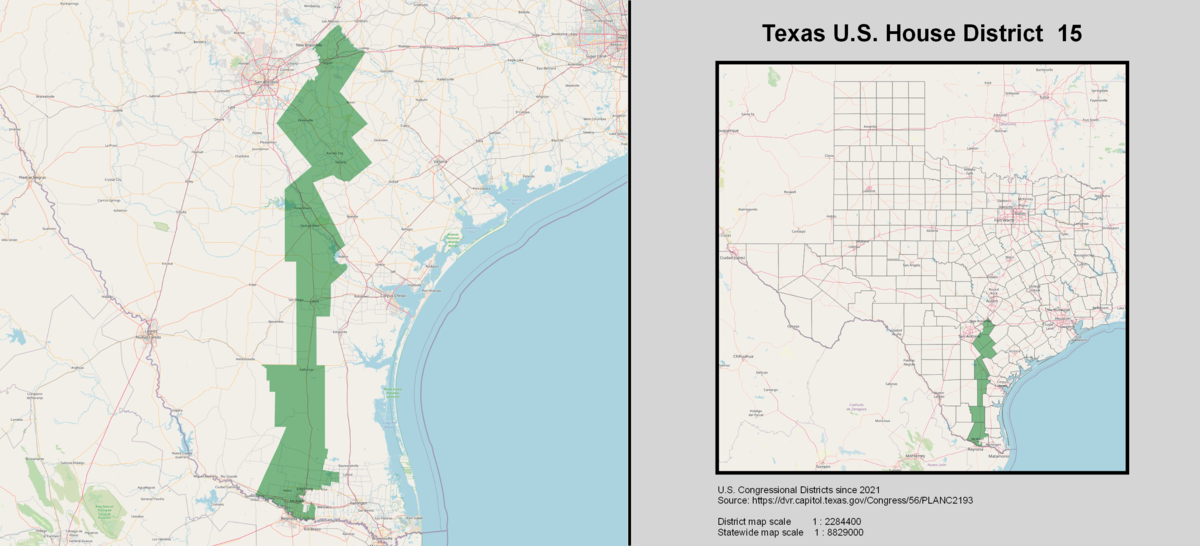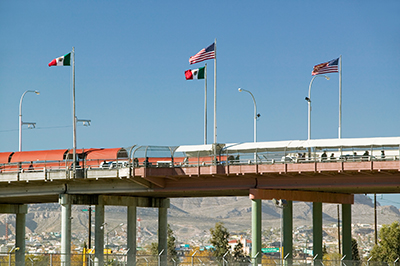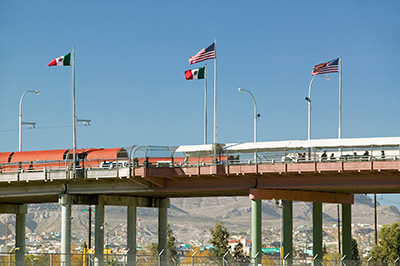Wasteful Spending in Montgomery County Road Bond Fails to Adequately Address Mobility Needs
 “Montgomery County has a traffic problem, and something must be done about it.”
“Montgomery County has a traffic problem, and something must be done about it.”
Utter that statement to county residents and you’ll get a similar response to what you would hear had you just told them the sky is blue and Washington is incompetent. It’s a fact, and it’s terribly frustrating.
Traffic has gotten to the point that it is unavoidable in most parts of the county. FM 1488 at peak hours is often backed up from I-45 all the way to SH 242. In the late afternoon it can take 30 minutes simply to travel half a mile down Sawdust Road. Research Forest and Lake Woodlands Dr. are no longer alternatives to the traffic on The Woodlands Parkway, as they now carry their own traffic. And the intersection of FM 1488 and FM 1774 has long been considered the worst snafu in the entire county.
Montgomery County is growing at a rapid pace, but its growth should not come as a surprise given the county’s proximity to Houston. While traffic increases inevitably accompany growth, gross congestion on such a large scale does not, unless poor planning is thrown into the mix. Indeed, poor planning is a reliable culprit in our county government, whose elected commissioners have failed to put together a countywide mobility plan for years, despite the upticks in growth. Despite being one of the most populous counties in the state – as well as one of the fastest growing, and home to best-in-state school districts and the headquarters of such corporations as Anadarko, Chevron Phillips, and Woodforest National Bank – Montgomery County is still operating its budget as if it were the 1920s. Instead of prioritizing projects across the county, commissioners instead split the budget four ways, giving each commissioner an equal share of the pie for use in their individual fiefdoms. This means that less populated precincts receive the same amount of funding as precincts with a higher population, and therefore, more urgent construction and repair needs; it is the reason why there is a sprawling, little-used road in precinct 1 named after the current commissioner, while the more populated precinct 3 has dire needs that for years have gone unfunded.
While poor planning may have caused the majority of our traffic problems to date, there is another culprit – one who has long resided in commissioners court - to whom we will be able to attribute a failure to solve these current problems. It is equal parts political conceit and fiscal irresponsibility, but is better known in political terminology as “business as usual.”
The last road bond approved by Montgomery County voters was a $160 million bond in 2005. In 2011, voters rejected a $200 million bond due to a lack of specification of projects for which the money would be used. Voters were right to do so, as Montgomery County is one of the highest indebted counties in Texas. Commissioners should not ask the voters to simply trust them that the money is needed and will go toward the county’s highest priorities; they should plan a specific use for every dollar and make that project list available to the public before a vote is taken.
Commissioners have the opportunity to address the county’s mobility needs in a $350 million road bond they plan to present before the voters on May 9th of this year. They have taken steps to include a project list (even though 17% of the budget for Precinct 1 is “to be determined”), and formed a committee to identify construction and repair needs in the county. The committee identified $1.3 billion worth of improvement projects toward which to spend the proposed $350 million. Being that only about a quarter of these projects could be covered, you would think that the commissioners would tackle the high-priority projects first. Instead, one of the largest projects to be funded isn’t even about alleviating traffic congestion. In fact, according to the studies, it will only lead to more traffic congestion in The Woodlands.
Commissioners plan to spend (at least) $22 million to extend The Woodlands Parkway to SH 249, effectively placing a major county thoroughfare straight through The Woodlands. Cities and counties often spend large sums of money to build bypasses to avoid funneling traffic through the heart of their communities. In fact, the road bond contains a project to build a bypass to divert traffic around the city of Magnolia. But with The Woodlands, commissioners have decided to do the exact opposite; the project will cut the community in half, and have an irreversibly negative effect on the carefully constructed, peaceful village system residents thought they were investing in upon moving to the area.
A traffic study by Brown and Gay Engineers recently concluded that the extension project would result in more traffic on The Woodlands Parkway because it would “’induce’ additional traffic into the corridor that would otherwise not be there.” In fact, it would cause the section of Woodlands Parkway west of Kuykendahl to exceed the traffic capacity threshold by 2025. The intersections at FM 2978 (currently graded a “D”) and Kuykendahl (already graded an “F,” meaning improvements need to be made now) would both be graded an “F” for all peak traffic hours by 2018 if the extension is built.
Since traffic on The Woodlands Parkway would exceed the capacity threshold so quickly, the only way to alleviate the congestion would be to expand the road to six lanes. However, due to covenant restrictions in The Woodlands, the road could not be widened, leaving only one option: taking out the median. Aesthetics aside, this would eliminate the natural sound barrier that reduces noise pollution, giving The Woodlands its signature peaceful community feel. Sound barriers, much like they have on FM 1960, would need to be constructed to compensate for this. Without adding two lanes, the Brown and Gay study shows that traffic would continue to increase over capacity so much that by 2040 – the final design year looked at in the study – the parkway’s traffic load would start to approach the capacity of a six lane road. One can only assume that adding the additional two lanes would speed up this process, so that capacity is reached before 2040.
Using The Woodlands Parkway as a main county thoroughfare now – as opposed to using available alternatives first – would give the parkway newfound dominance in the east-west corridor and set the road up to be a victim of the domino effect: first more traffic will come due to the extension, which will cause a need to accommodate that traffic, which will cause more traffic to come, which will call for more accommodations. Alternatives will be developed as well in order to lessen the burden on the parkway. But The Woodlands Parkway should be treated as a subtle, potential future alternative to existing roads in the east-west corridor, instead of the spearhead for all future traffic loads. Otherwise, the landscape of The Woodlands is pretty soon likely to see the main artery of our peaceful community lined with sound barrier walls with traffic moving at speeds of the L.A. freeway, due to the road’s inability to be widened.
Proponents of the extension make the argument that The Woodlands Parkway was always meant to be extended to SH 249 dating back to plans made over 30 years ago. However, these plans were made when The Woodlands itself was supposed to extend all the way to SH 249. When George Mitchell sold the land past FM 2978 years ago, there’s no reason to believe the road that was meant to act as the main street of an insulated community should extend past its borders, much less become the largest part of an east-west county traffic corridor. However, due to growth projections for the county, the South County Mobility Study has determined that The Woodlands Parkway eventually might need to be extended. But not until at least 2040. In fact, then-commissioner now-County Judge Craig Doyal acknowledged such in 2012, when he remarked that “we’re not pressed for time, there’s no urgency [to extend the parkway].” Now Judge Doyal is leading the charge to keep the extension on the bond’s list of projects, even though widespread opposition to it may cause the entire bond to fail. If there was no urgency three years ago, and the South County Mobility Plan doesn’t think there will be any urgency to extend the parkway until 2040, then why are the commissioners proposing that we extend it? Are there no alternatives?
In fact, the Brown and Gay study identified Hardin Store Road as being a “viable alternative to building The Woodlands Parkway extension because it already carries a significant amount of traffic using the existing Woodlands Parkway section east of FM 2978.” The road already exists, and part of the bond money for Precinct 2 is going toward rehabbing the road. It makes a lot more sense to expand Hardin Store to four lanes rather than building an entirely new road, which apart from construction also requires extensive planning such as an environmental analysis.
The distance to travel from where Woodlands Parkway currently ends at FM 2978 to SH 249 via Hardin Store Road is approximately 4.6 miles. The Woodlands Parkway extension would be 5.6 miles. Where Hardin Store intersects SH 249 is approximately 1.5 miles away from where the proposed extension would intersect SH 249. Assuming a person needs to get to the exact point where the extension meets SH 249, the distance saved by building the extension would be half a mile. $22 million for half a mile is preposterous, and cannot be offered as a solution to mobility problems when there are so many other projects toward which the money could be used.
Being that the Parkway extension cannot be justified as a solution to mobility problems, the most reasonable explanation is that it is a gift, funded by the taxpayers, for developers who plan to build in the area through which the road will pass. It is not a coincidence that land through which the proposed extension will pass is owned by some of the loudest proponents of the bond, not to mention individuals who are politically connected to the Montgomery County establishment. The existing section of Woodlands Parkway was built by developers because it was developer-owned land. Any roads on developer land between FM 2978 and SH 249 should also be built by developers if they are to be built at all.
Texas Patriots PAC is concerned about mobility needs in our county. The reason we do not support this road bond is precisely because it fails to do what it was intended to do:
- With over a billion dollars in potential mobility improvements, the county should not be wasting money on a project that not only is a taxpayer funded gift to private entities, but that will inevitably exacerbate traffic instead of mitigate it.
- We should also not be using bonds for maintenance projects. Maintenance should be a part of the ongoing regular operations spending of the county. 18% ($64 million) of this bond is set to be spent on maintenance projects. That money, along with the 6% ($22 million) being spent on the Parkway, should be directed at projects that actually improve mobility.
- Taxes will increase. With all of the other county borrowing plans/needs - $200+ million for a new jail, and $80+ million for the SH 249 toll road – it is inconceivable that there will not be a tax increase, making it critically important that money borrowed to improve mobility actually improves mobility.
There are many other projects toward which the money being wasted in this bond could be spent. Commissioner Noack identified $82,361,000 in projects in precinct 3 such as completing Birnham Woods and Elan Blvd and widening Budde Rd that are going unfunded in this bond. The intersection at FM 1488 and FM 1774 in Magnolia could also use more funding, as currently only $5 million is allocated toward the project with the hopes of attracting support from TxDOT, who currently does not have the intersection on its list of projects.
Voters should take a stand against wasting transportation dollars, and vote this bond down on May 9th. After that, commissioners should remove The Woodlands Parkway extension project, make sure that every dollar of this bond will be spent on improving mobility, and quickly return it to the voters in November. If this is done, Texas Patriots PAC will join residents in approving a bond that is direly needed. But not before it is worthy of taxpayer support.








